Forest conversion in Kalimantan is a local, national and global concern
Nanang Indra Kurniawan
One terrible morning last September, I woke suddenly at 6 am, struggling to breathe and with a sore throat. I started coughing and tried to get outside my rented room in Palangkaraya in Central Kalimantan. Once I was out on the street, I realised that the city was covered in a thick haze. Although I had heard a lot about the haze from forest fires, this was my first experience of it.
Thick haze blocks the sun and makes the daylight dim, Nanang Indra Kurniawan
Forest fires have become an annual occurrence in Kalimantan during the dry season, particularly between July and November. Thick haze blankets the main roads in various cities and blocks the sun, making the daylight dim. In Palangkaraya and other cities, the haze causes extensive health and traffic problems. People wear face masks to avoid respiratory infections. Motorists turn on their lights to avoid collisions.
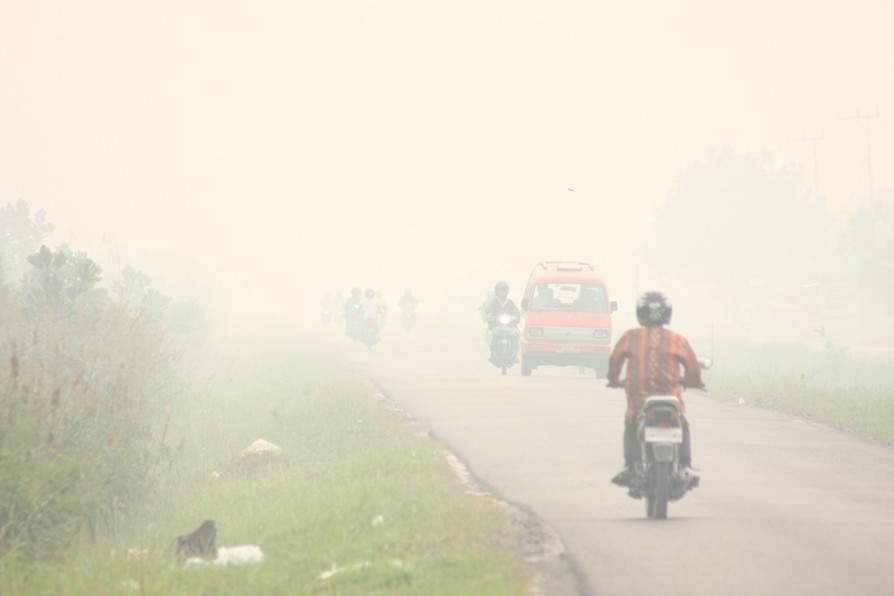 Low visibility on the roads in Palangkaraya, Nanang Indra Kurniawan
Low visibility on the roads in Palangkaraya, Nanang Indra Kurniawan
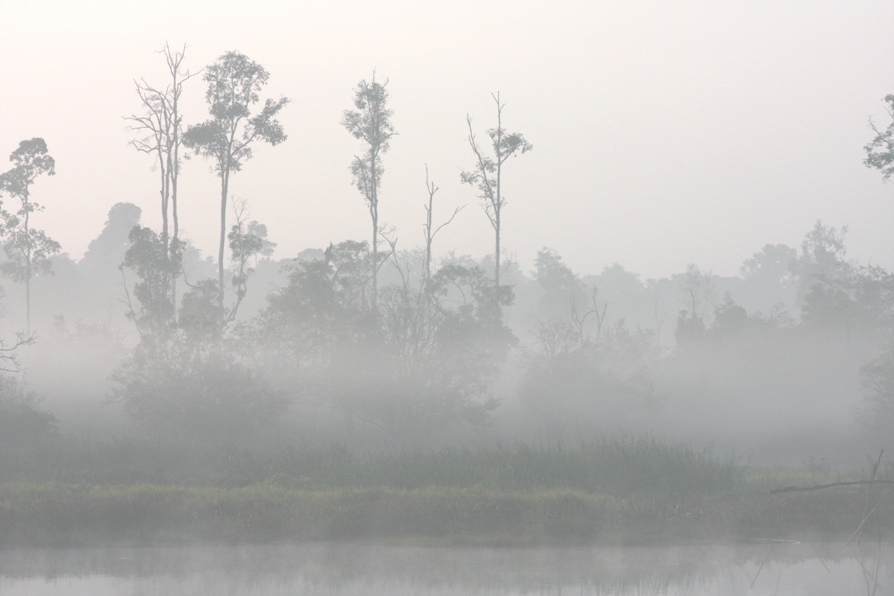
Thick haze blocks the sun and makes the daylight dim, Nanang Indra Kurniawan
The government and the media blame local farmers and shifting cultivators for the forest fires, attributing them to slash-and-burn clearing of land for the next planting season. Banners in various cities warn farmers not to light fires to clear their lands. Local authorities also threaten to arrest people if they do not stop their ‘illegal activities’.
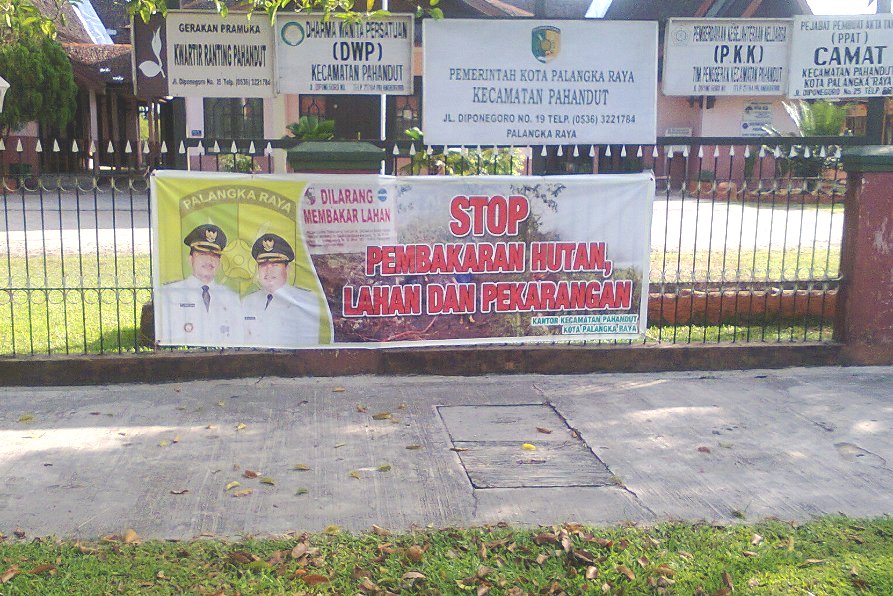 A local government banner: 'Stop the burning of forests, fields and yards', Nanang Indra Kurniawan
A local government banner: 'Stop the burning of forests, fields and yards', Nanang Indra Kurniawan
Local farmers’ practices do contribute to forest fires, but environmental organisations point their fingers at oil palm plantation companies because they clear land on an industrial scale. Many oil palm plantation companies use burning as the most efficient way to clear land. Often they burn primary forest.
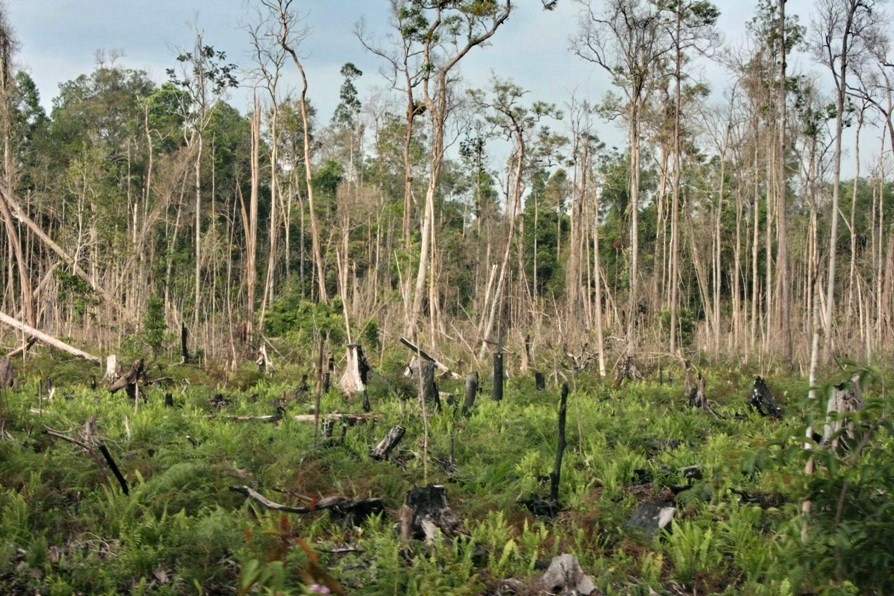 The remains of burned forest, Nanang Indra Kurniawan
The remains of burned forest, Nanang Indra Kurniawan
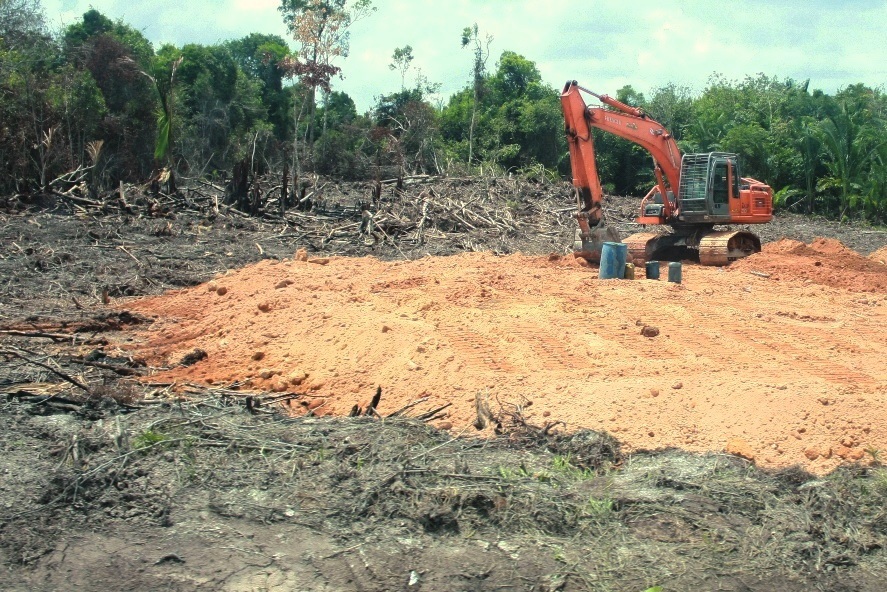 An oil palm plantation that has used burning to clear land, Nanang Indra Kurniawan
An oil palm plantation that has used burning to clear land, Nanang Indra Kurniawan
The history of environmental degradation in Kalimantan can be traced to the economic policies of Suharto's New Order regime. Indonesia emerged in the early 1970s as the world’s second largest exporter of tropical logs, and the forestry sector became the country’s second largest source of Gross National Product. By 1979, Indonesia had become the world largest log exporter, supplying 41 per cent of world market, with exports valued at around US $2.1 billion.
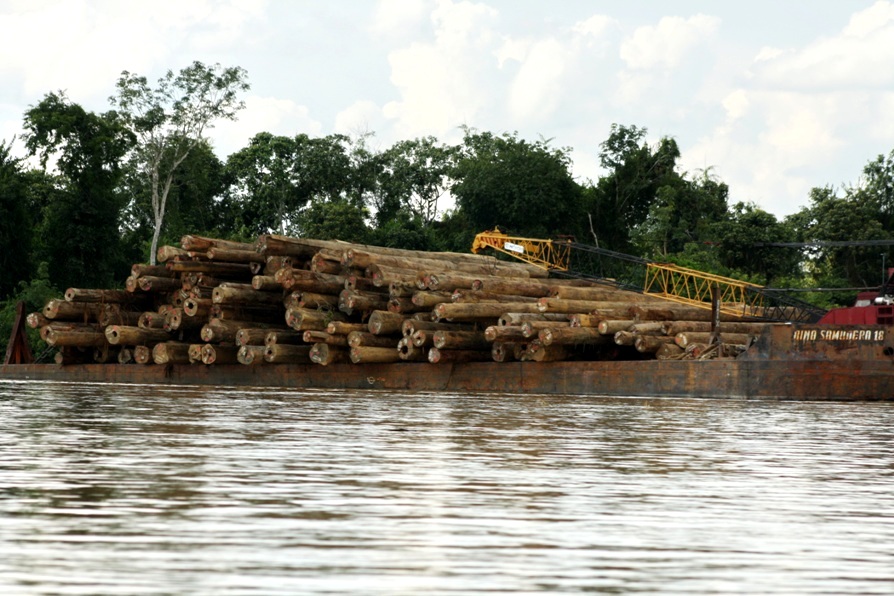 Hundreds of logs being transported on a pontoon along the Katingan River, Nanang Indra Kurniawan
Hundreds of logs being transported on a pontoon along the Katingan River, Nanang Indra Kurniawan
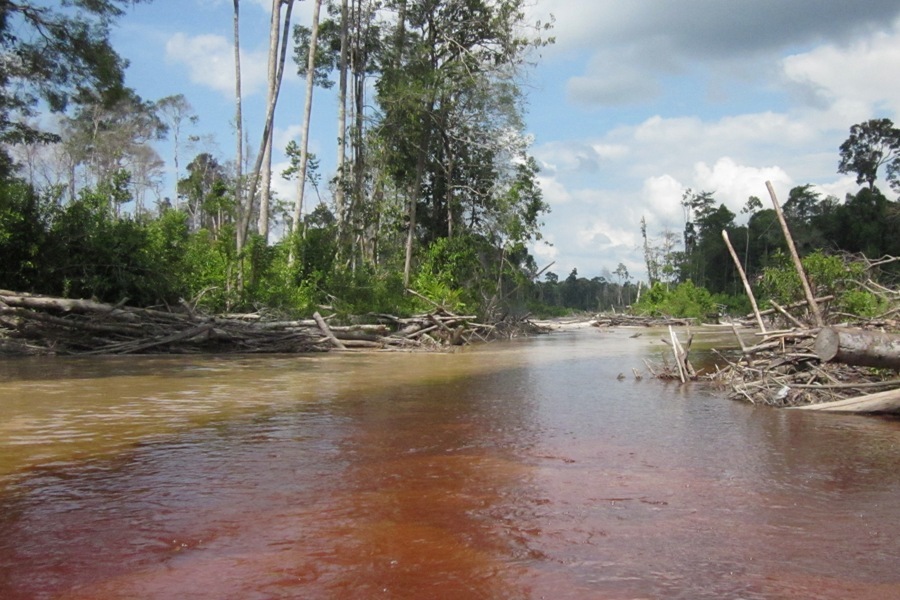 The scars of illegal logging in Pulang Pisau District, Nanang Indra Kurniawan
The scars of illegal logging in Pulang Pisau District, Nanang Indra Kurniawan
The scars left behind by logging in Central Kalimantan include hundreds of canals running from the Katingan River into the interior of the forest. Timber companies used the canals to transfer logs along the river from the forest to Banjarmasin in South Kalimantan. Between 2003 and 2007, illegal loggers exploited the forest in this area on a massive scale. A chain of actors was involved, from logging companies to police, the military, the government bureaucracy and the local people.
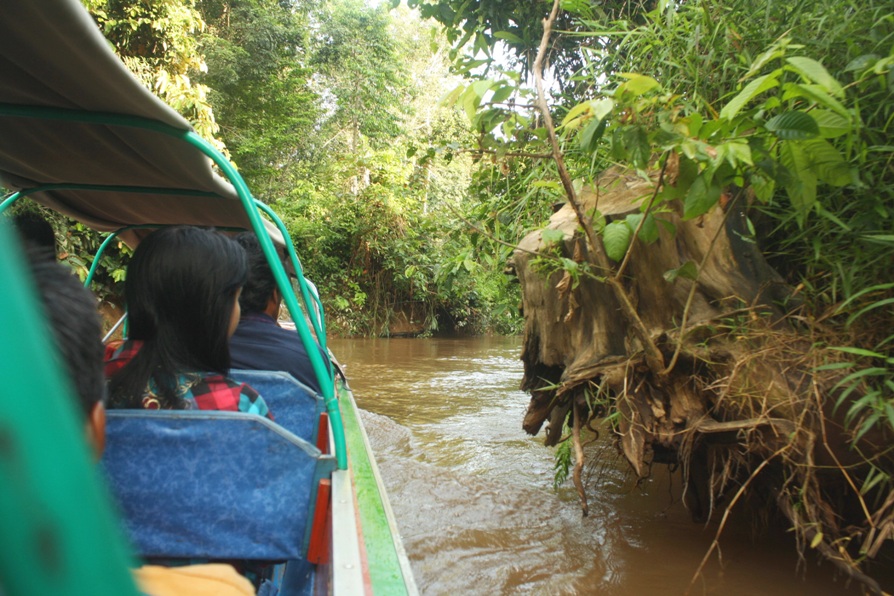 A water taxi navigates a canal formerly used by logging companies to transport logs, Nanang Indra Kurniawan
A water taxi navigates a canal formerly used by logging companies to transport logs, Nanang Indra Kurniawan
Deforestation in Kalimantan has become a national and global concern. The World Wide Fund for Nature estimates that Kalimantan's total loss of forest between 2000 and 2010 amounted to 8.64 million hectares. The uncontrolled conversion of forest for economic projects, particularly coal mines and oil palm plantations, is now the primary cause of environmental degradation in Kalimantan.
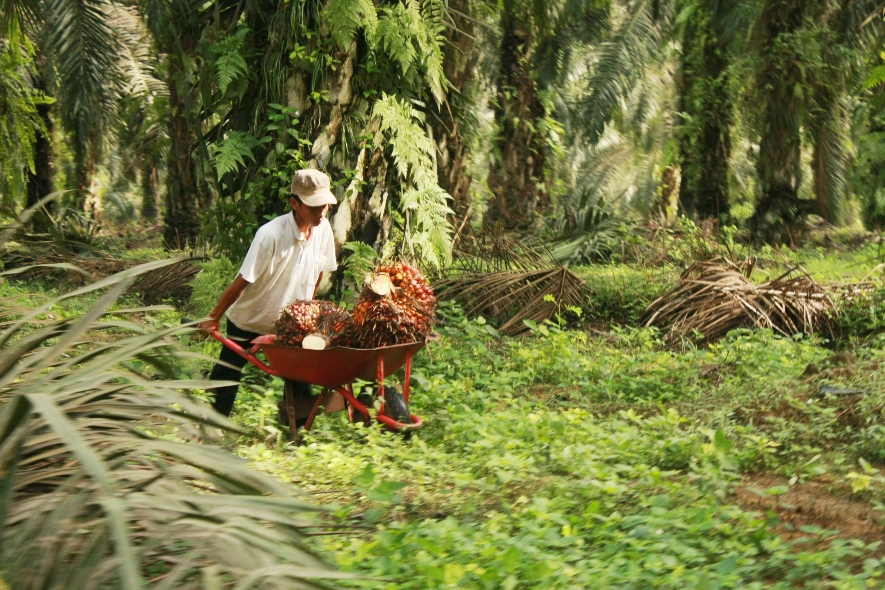 An oil palm worker's harvest, Nanang Indra Kurniawan
An oil palm worker's harvest, Nanang Indra Kurniawan
Global demand for these commodities and the poor governance have each contributed to this problem. The 2011 findings of the Presidential Task Force on Combating the Legal Mafia, working with the Ministry of Forestry, found there to be 282 oil palm plantation companies and 629 mining companies operating without licences in Central Kalimantan alone. Their illegal activities covered more than 7.5 million hectares, or almost half of Central Kalimantan's land area.
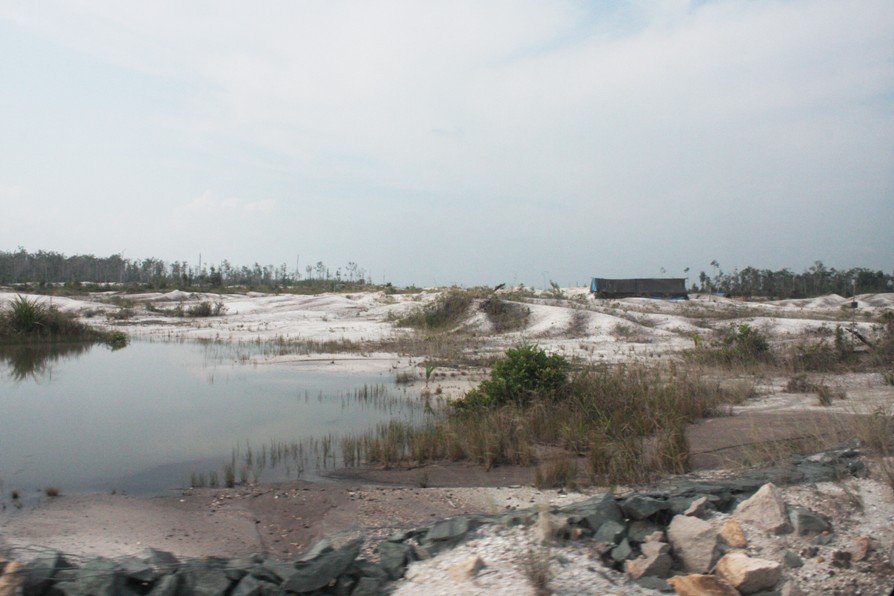 Degraded and deforested land in a gold mining concession in Central Kalimantan, Nanang Indra Kurniawan
Degraded and deforested land in a gold mining concession in Central Kalimantan, Nanang Indra Kurniawan
Economic development in Kalimantan has caused environmental problems beyond forest areas. One of the major sources of river pollution is the mercury used by small-scale gold miners to extract gold. Mercury is widely used by local miners to separate gold from ore in a process called amalgamation. To produce the gold, local miners boil away the mercury from the amalgam. In most cases in Central Kalimantan, the tailings of this production process are dumped directly in the river.
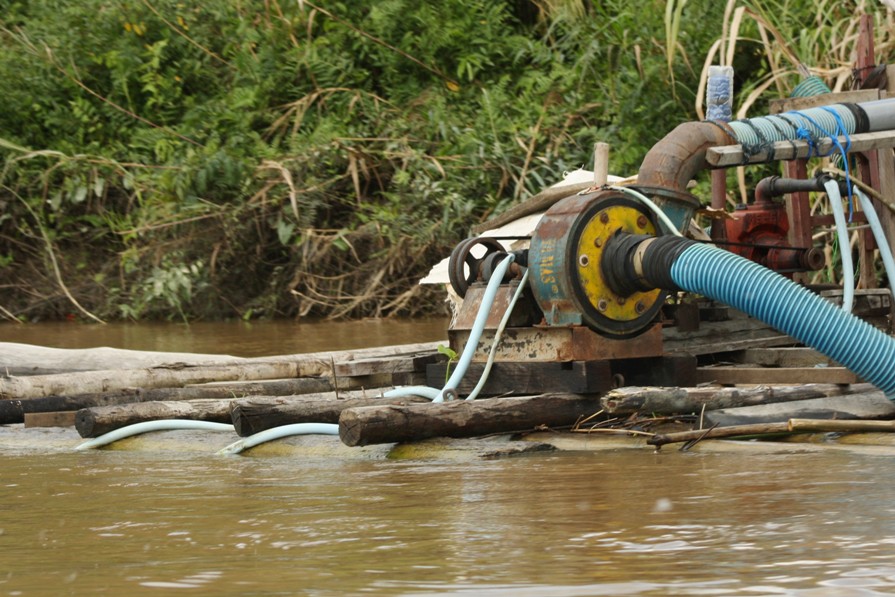 A machine used by a small-scale gold miner. The waste is disposed directly into the river, Nanang Indra Kurniawan
A machine used by a small-scale gold miner. The waste is disposed directly into the river, Nanang Indra Kurniawan
Environmental agencies and non-governmental organisations have warned of the effects of mercury on human health, especially on the nervous, digestive and immune systems, but also on the lungs, kidneys, skin and eyes. Mercury may also pose a health risk to people who consume contaminated fish. As early as 2005, the Koran Tempo daily reported that 11 watersheds in Central Kalimantan had been polluted by mercury. According to researcher, Heriamariaty, 1563 machines dump 1.5 tons of mercury into the water every three months into the Kahayan River alone.
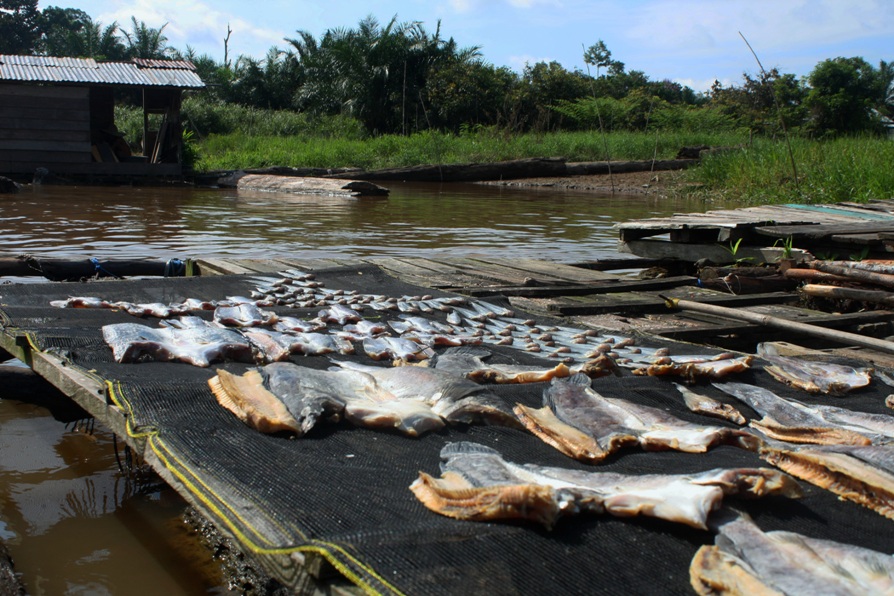 Dried river fish taken from the Katingan River, Nanang Indra Kurniawan
Dried river fish taken from the Katingan River, Nanang Indra Kurniawan
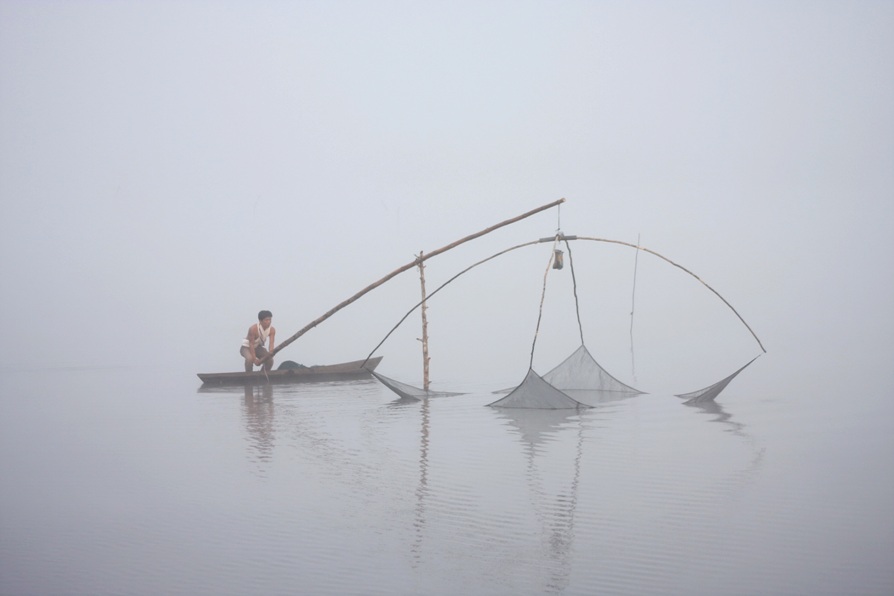 A fisherman pulls his net out of the water, Nanang Indra Kurniawan
A fisherman pulls his net out of the water, Nanang Indra Kurniawan
The threat posed by soil erosion and water pollution is clear. Local people are traditionally highly dependent on rivers for agriculture, drinking water, ablutions and for other daily activities. They also use rivers as their main transportation route, and derive their livelihoods from the river through activities such as fishing.
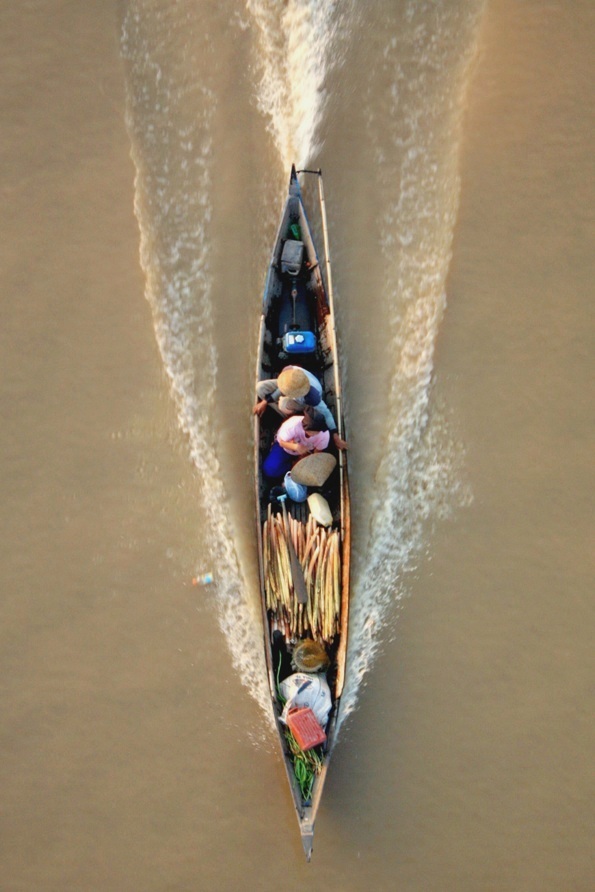 Local people still depend on the Kahayan River as a transportation route, Nanang Indra Kurniawan
Local people still depend on the Kahayan River as a transportation route, Nanang Indra Kurniawan
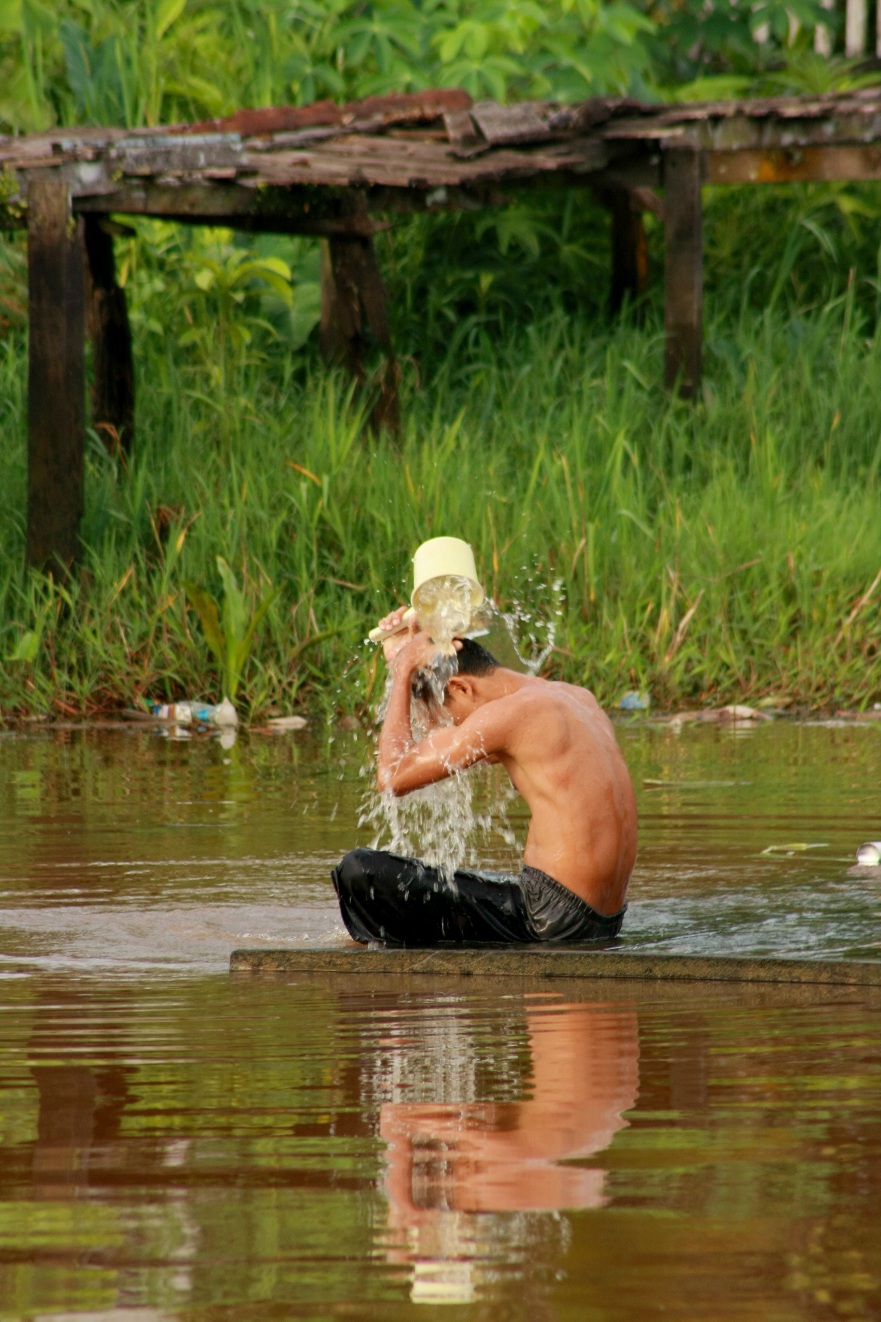 Bathing in the Kahayan River, Nanang Indra Kurniawan
Bathing in the Kahayan River, Nanang Indra Kurniawan
Neither the causes nor the impacts of environmental degradation in Kalimantan are purely local. National development policies and global market demands have each caused this degradation. Within Kalimantan, environmental problems threaten the local ecology and the welfare of locals. But their impact extends beyond Kalimantan's borders through the annual haze that reaches as far as Malaysia and Singapore, and the contribution of deforestation in Kalimantan to global climate change. According to a 2007 World Bank report, if deforestation, peatland degradation and forest fires are counted, Indonesia is also the third biggest emitter of the greenhouse gases blamed for global warming.
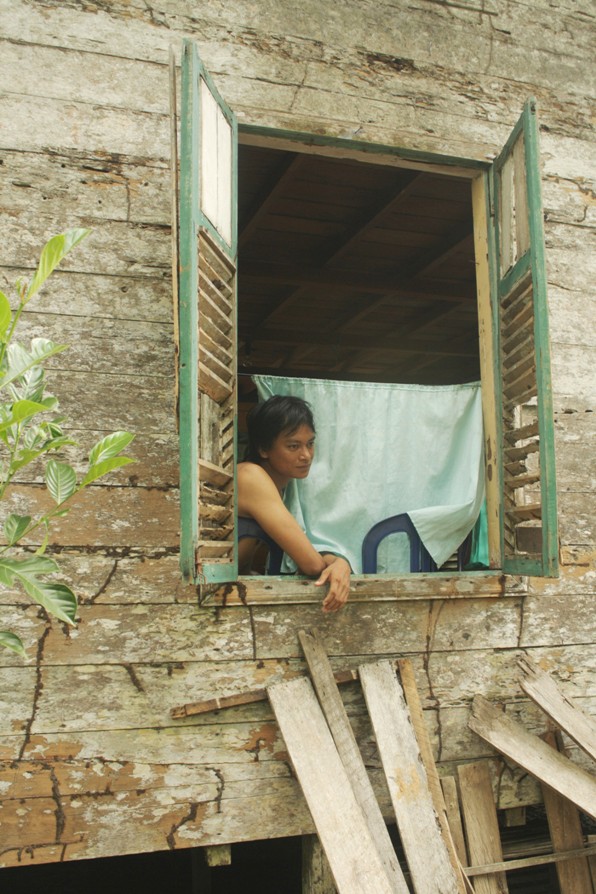 Poverty threatens local communities in Kalimantan, Nanang Indra Kurniawan
Poverty threatens local communities in Kalimantan, Nanang Indra Kurniawan
Reflecting the scale of the problem, local, national and global actors have established initiatives aimed at saving Kalimantan. Cooperation between these actors needs to be expanded. The Indonesian government can contribute by improving governance and law enforcement in the natural resource sector. Social and economic empowerment is also important, particularly for local communities who have been marginalised by development programs and suffer the consequences of environmental degradation. Saving Kalimantan’s future does not only mean saving the environment, but also improving the quality of life for its people. Efforts to promote environmental sustainability will work if local communities play an active part in the decision-making process, and derive cultural and economic benefits from the initiatives.
Nanang Indra Kurniawan (nanang.kurniawan@gmail.com) is a lecturer at Gadjah Mada University and a PhD Candidate at Victoria University, Melbourne. He conducted field research in Kalimantan between April 2012 and March 2013 on local environmental knowledge production.
{gallery}stories/edition_112/kurniawan:140:112:0:2:jquery_prettyphoto:Elegant{/gallery}
